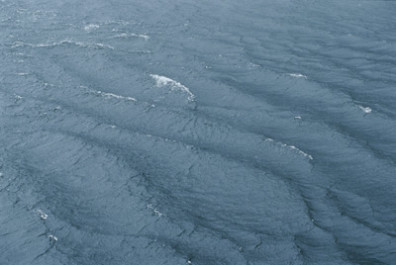Winds drive ocean currents, especially the surface currents that transport buoyant pollutants such as oil. Winds also generate waves that mix the upper ocean and mediate atmosphere-ocean transfers of chemicals (e.g. CO2) and heat (important to the earth’s climate). We measured wind-generated currents within a few tens of cm of the surface, and found a curious pattern: the surface current usually flowed downwind (relative to the underlying current), as you’d expect, but the difference between surface and underlying curtrents did not increase with increasing windspeed.
We found that simple formulas (derived from previous models) for mixing by waves explained our observations. As windspeed increased, so did wave heights. The resulting increase in wave breaking mixed surface & underlying water, thereby ensuring that surface and underlying velocities did not greatly differ. This work was published in the journal Continental Shelf Research.
